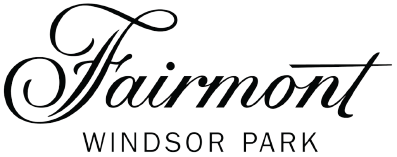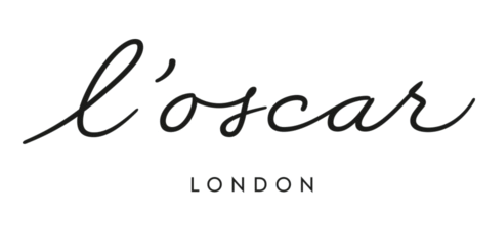
When it comes to managing your financial future, building a diverse and well-structured investment portfolio is one of the key strategies for long-term success. But how exactly do you build a collection of investments? How do you get started? And what are some of the best investments?
Building a collection of investments that can help you reach your financial objectives requires careful consideration, ongoing management, and a commitment to adapt as needed.
In this blog post, we will provide you with some essential tips and concepts to help you navigate the world of portfolio investment. Read on for more about the world of asset management, portfolio allocation, and risk management.
Tip 1: Diversify Your Portfolio
One of the most important aspects of portfolio management is asset allocation and diversification. Proper diversification involves spreading your investments across different financial asset classes and sectors to reduce risk.
Diversification can help you achieve a balance between seeking returns and managing risk. For instance, if you have a high-risk tolerance and a long-term investment horizon, you might allocate a larger portion of your portfolio to stocks, which have the potential for higher returns but also higher volatility.
On the other hand, if you have a lower risk tolerance and a short-term time horizon, you might allocate more to bonds, which are generally less volatile. Some assets you could include in your investment portfolio include:
Stocks
Stocks represent ownership in a company. When you purchase a company's shares, you become a shareholder, and your returns depend on the company's performance.
Buying and selling shares involves acquiring or disposing of ownership stakes in publicly traded companies. Investors purchase shares through stock exchanges, while brokers facilitate transactions.
Growth stocks are shares of companies expected to expand significantly and outperform the market. They prioritise reinvesting profits for growth, often foregoing dividends. However, they typically entail higher risk due to valuations and market volatility.
Bonds
Bonds are debt securities issued by governments, corporations, or municipalities. When you invest in bonds, you lend money to the issuer in exchange for periodic interest payments and the return of your principal at maturity.
Mutual Funds
Mutual funds pool money from multiple investors to invest in a diversified portfolio of stocks, bonds, or other securities. They offer a convenient way to diversify your investments.
There are several types of funds to invest in. Equity funds invest in stocks, aiming for capital growth. Bond funds focus on fixed-income securities, providing income and stability.
Money market funds offer short-term, low-risk investments. Balanced funds combine stocks and bonds for a balanced risk-return profile. Specialised funds target specific sectors or asset classes.
Real Estate
Real estate investments can include physical properties, such as residential or commercial properties, as well as real estate investment trusts (REITs).
Art Investments
The art market offers a unique opportunity for investors. At Grove Gallery, for example, you can invest in art and potentially generate up to a 12% return on your investment. Unlike many other forms of investment, you can begin investing in art with just £3,000.
Tip 2: Thoroughly Assess The Risk
Portfolio risk can be categorised into various types. First of all, you have market risk. This risk pertains to the overall market conditions, such as economic trends, geopolitical events, and changes in interest rates. Diversifying your portfolio can help mitigate market risk.
Be sure to assess the credit risk. This involves the potential for bond issuers or companies to default on their debt payments. Credit risk can be reduced by investing in bonds with higher credit ratings.
Next, we have the duration risk. If you’re a bond investor, the duration risk relates to the sensitivity of a bond's price to changes in interest rates. Longer-term bonds are more sensitive to interest rate changes. Security-specific risk pertains to the performance of individual investments within your portfolio.
This risk can be mitigated through careful security selection and diversification. Finally, consider the average return. Your portfolio's average return is the weighted average of the returns of the individual assets within your portfolio. Be sure to aim for a return that aligns with your financial goals and risk tolerance.
Tip 4: Conduct Thorough Research
When you are building a collection of investments, knowledge is power. To make informed decisions, it's essential to gather and analyse relevant data. Keep a close eye on your investments, track their performance, and regularly assess how they align with your financial goals.
For instance, in the case of stocks, you should consider the average return, historical performance, and the security's potential for future growth. In the realm of mutual funds, understand the fund's objectives, its past performance, and the fees associated with the fund.
When it comes to art investments, our team at Grove Gallery provide clear data on the artworks available for investment. You can access information about the artists, the historical performance of their works, and even view them in person at the gallery.
Tip 5: Stay Flexible
The world of financial portfolios is dynamic. Your financial goals, risk tolerance, and market conditions can change over time. Therefore, it's essential to remain flexible and adaptable. Be prepared to adjust your portfolio allocation as needed, and don't be afraid to seek expert advice when necessary.
Tip 6: Become an Art Investor
If you are looking to build a collection of investments, why not consider investing in art? This alternative type of investment offers a unique opportunity to diversify your portfolio with the potential for high returns.
If you're looking for an innovative way to enhance your portfolio, art investments may be the answer. Whether you're a seasoned investor or just starting, remember that the path to financial success is a journey, and the journey is as important as the destination.
Start your journey today with Grove Gallery and open up new possibilities for your financial future. Invest in a wide range of blue-chip artists such as Warhol, Banksy, Haring and more.






